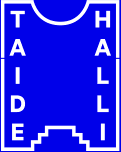Tilaa uutiskirje
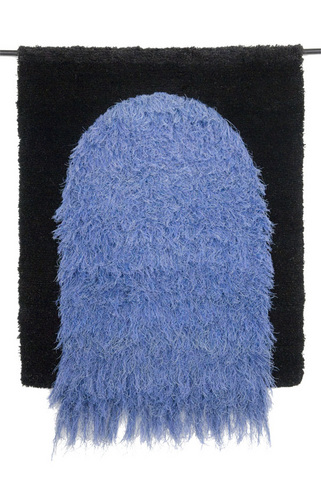
Art Activities for Kids
These art activities are designed to compliment the viewing experience of the collection of ryijys exhibited in Taidehalli. The suggested activities can guide you to expand your experience of viewing the ryijys into imagination and creation of something of your own. These are provided for school-aged children, but can easily be adapted or elaborated for anyone interested, younger and older.
1. Ryijy design on a grid paper
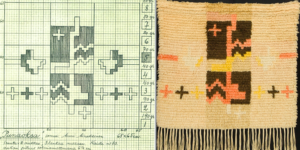
In many of the ryijys, more so in the older ones, we can find symmetries or repetitive patterns. On a grid paper, design a ryijy using symmetries and/or repeating patterns. Consider the choice of colors, sizes of shapes and the overall composition. Is it for a specific place or a person? Is there something you want to symbolize or represent?
Image: Armi Airaksinen, Punaoksa
2. Mini sculpture inspired by a ryijy technique
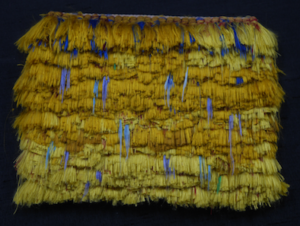
More noticeable in the newer ryijys, we can see the relief effect created by using different lengths, thicknesses and textures of the yarns. Not only wool, but paper and linen threads and sometimes even objects were used. Inspired by this effect, create a mini sculpture using colored rolled paper or cut paper straws. Play with different lengths, thickness and colors. Glue them vertically on a piece of cardboard.
Image: Katri Haahti, Bird of Paradise, 2011
3. Furry Creature
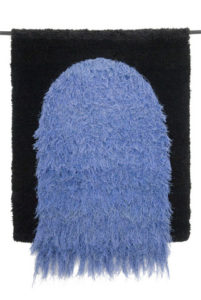
Considering the shapes and texture of this ryijy, can we perhaps imagine a furry monster-like creature? Use furry materials, such as pompoms, feathers, and fabric pieces. Name the creature and write about it. What kind of voice or sound would it have? What kind of personality would it have? What does it like (e.g. Objects, songs, food, smell, activities)? What is something very special in this creature?
Image: Maisa Kaarna, The Gate, 1980
4. Knots
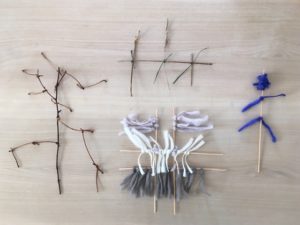
Ryijys are created by knotting the yarn. Using grill sticks and yarn, try to come up with as many different knots as possible! Remember to cut the pointy end of the sticks to avoid poking yourself or others. You can tie many sticks together to make grids, as in the warp and the weft for piles, or simple tie many knots on one stick.
Alternatively, you can go for a nature walk and find sticks, and long plants for tying knots, for example, primary veins of fallen leaves, stem parts of clovers or dandelions, or any long grassy weeds.
5. Scene with ryijys
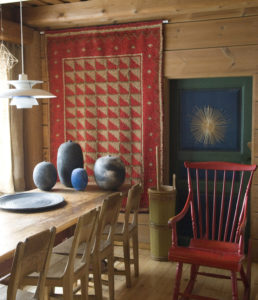
Ryijys have been placed on beds, hung on walls, placed on sledges, chairs, benches, and on floors. The placement suggests how ryijys have been used. Imagine a place where you would like to put a ryijy. Is it for yourself or is it a present for someone? Is it for a certain occasion, as in wedding ryijys? It can be from your fond memory or a newly imagined (im)possibility. For example, your home, school lobby, airplane seats, public space that you like, or even your commuting route! Draw or paint the place with the ryijy(s).
Prepared by: Eungyung Kim
